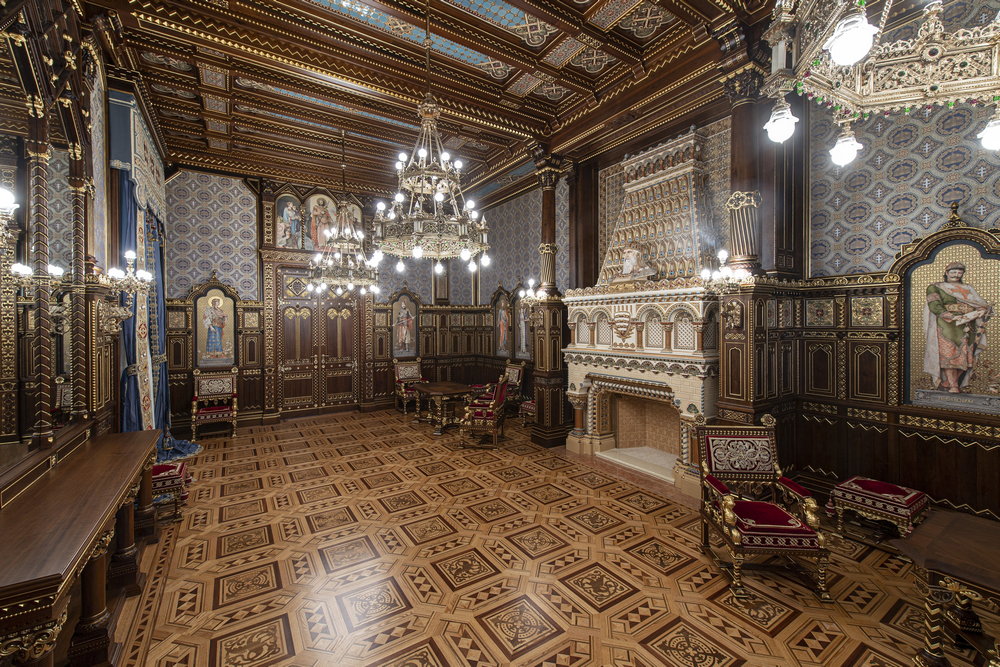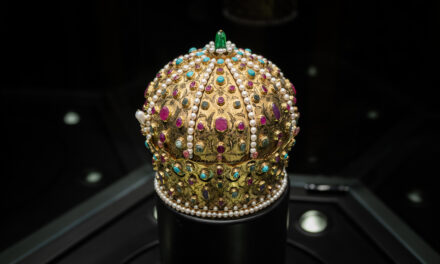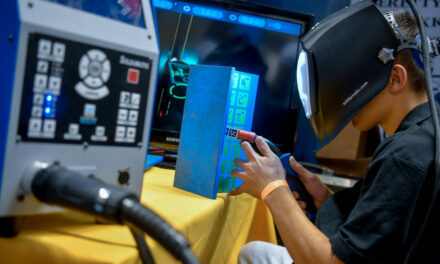The St. István Hall of the Budavári Palace has been renovated with complete historical fidelity. The ornate interior can be visited free of charge from August 20 until the end of the month.
"After more than seven decades of civilisation, we can once again encounter the unique value of our past in its tangible reality, which we can now give back to the people," said Gergely Gulyás , the minister in charge of the Prime Minister's Office on Wednesday at the site. The opening of the hall is accompanied by a related exhibition.
Gergely Gulyás pointed out that the historical reconstruction of the Castle is progressing well, as evidenced by the buildings of the Palace Quarter that have regained their old glory, the Castle Garden Bazaar, the Main Guard and the Knights Templar building or the Carmelite Monastery.
As he recalled, the greatest figures of Hungarian industrial art at the time – Zsolnay, Thék, the Haas Fülöp és Fiai company or the Neuschlosz brothers – took part in the creation of the Szent István Hall, and now a dedicated team was able to recreate the former furnishings with enormous work.
Gergely Fodor , the government commissioner responsible for the renewal of the Budavári Palace Quarter, highlighted: the St. István Hall completed in 1902 - as part of the southern connecting wing - was completely burned during the destruction of the Second World War, and in the communist era after the war there was no chance of restoring the hall. He added: a true-to-life replica of the hall that won prizes at the World Exhibition in Paris that year was built within the framework of the National Hauszmann Program, with the help of the flourishing Hungarian applied arts.
"For me, this room says that Hungarian talent cannot be walled off. Its reconstruction is a small step in the restoration of the entire Palace, but it was an excellent field for gaining experience, after which we can turn much more boldly to the decade-long renovation of the entire Budavári Palace, the Citadel and the Visegrád Castle," said the government commissioner.
The redesign of the Szent István room architect Tibor Angyal , and the art expert art historian Tibor Rostás . The latter said: the reconstruction was helped by the fact that the room is the best documented space in the entire Royal Palace. "Archival photos and plan details were available, a series of visual plans and remaining pieces were found". Tibor Angyal emphasized that during the six years of work, old photographs were the greatest help.
Named after the founder of the state, King St. István, the hall was an outstanding achievement of Hungarian industrial art in the 19th and 20th centuries. at the turn of the century. Alajos Hauszmann, the defining Hungarian architect of the age of dualism, gathered the best of Hungarian craftsmen to create the hall, whose furnishings won the jury's grand prize at the World Exhibition in Paris in 1900. In December 1916 IV. For the coronation of Károly, the last Hungarian king, the Holy Crown went from here to the Matthias Church.
The domestic masters involved in the reconstruction worked for years on the design of the equipment. The Zsolnay pyrogranite pictures depicting the kings and saints of the Árpád House decorating the walls, the fireplace occupying the central place of the room and the bust of Saint István on top, the inlaid parquet, the metal and goldsmith work, the unique furniture and curtains, and the decorative covering covering the wall of the room. For the sake of an authentic reconstruction, representatives of now-disappearing trades took part in the creation: the excellence of seven professions from Pécs to Pápá, hundreds of professionals in around twenty workshops across the country worked on the reconstruction identical to the original.
The path to the Szent István room leads through a special exhibition on the first floor of the south connecting wing of the Buda Castle. The exhibition entitled The Szent István Hall – The Miracle of Budavári Palace is curated by the esthete Gábor Gulyás, and the installation related to the hall was created by the visual artist Sámuel Havadtőy.

The reborn Szent István room in Budavári Palace on August 12, 2021.
The Szent István hall was renovated with complete historical fidelity; the ornate inner square can be visited free of charge from August 20 until the end of the month. A contemporary replica of the hall that won prizes at the World Exhibition in Paris that year was built within the framework of the National Hauszmann Program, with the help of the flourishing Hungarian industrial arts. MTI/Zsolt Szigetváry
Gábor Gulyás spoke at the exhibition guide on Wednesday about the fact that Vilmos Aba-Novák's painting is considered a sensation, the existence of which art history knew about, but it was not shown in an exhibition until now. The work, made in 1936, shows the moment when Saint Stephen offers the crown to the Virgin Mary.
In addition to paintings, graphics, sculptures, installations and short films, the large herm of St. Stephen made in Rome in 1635, whose special pedestal was made by the greatest sculptor of the era, Giovanni Lorenzo Bernini, will also be exhibited. One of the largest herms in the world has been kept in the cathedral of the diocese of Zagreb since its creation, and is on display in Budapest for the first time.
Sámuel Havadtóy created the ten-gate installation specifically for this location, which is based on the almost thousand-year-old text of King Szent István's admonitions to Prince Imre. The work also includes a short film, in which the icons of Hungarian cultural life also say a sentence close to them from the ten chapters of the work.
"The use of the doors is a religious symbol, their color, the church color blue, I used the help of the best Hungarian jewelers, bronze casters, and carpenters to create them," said Sámuel Havadtőy.
MTI
Cover photo: MTI/Zoltán Balogh












